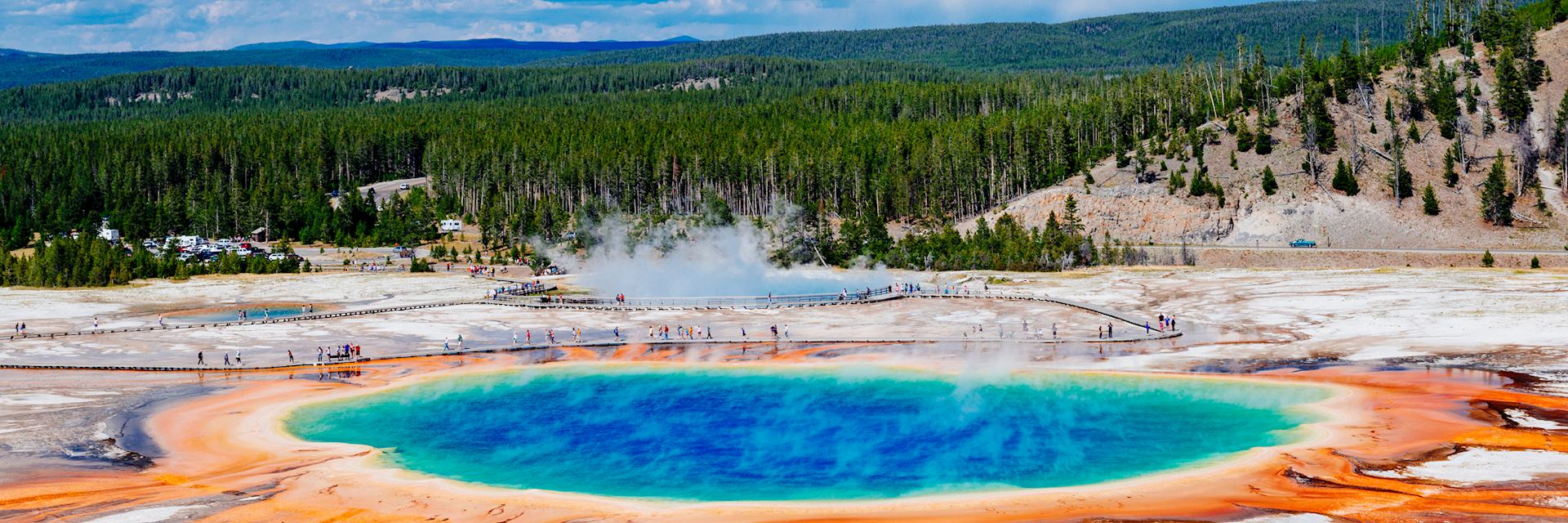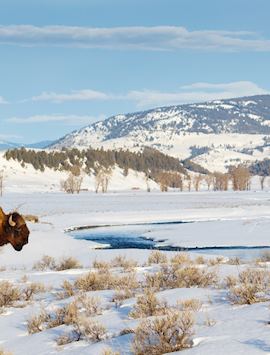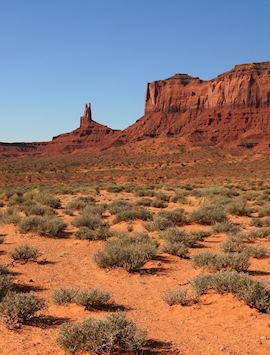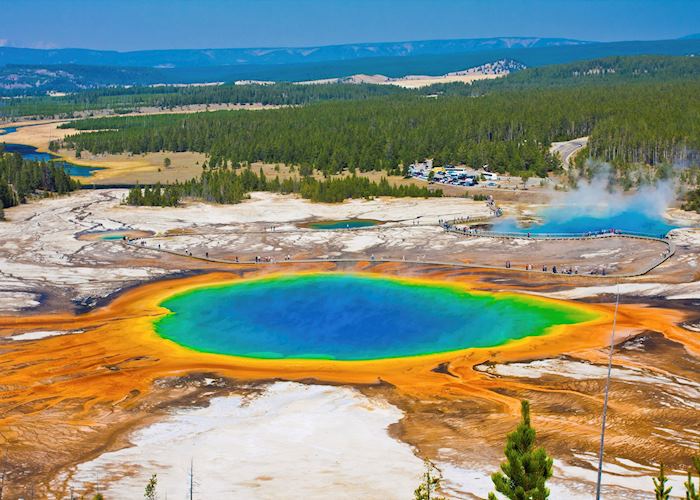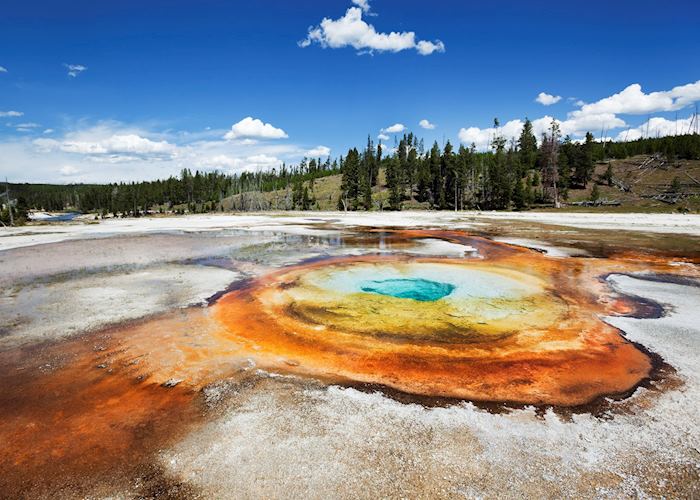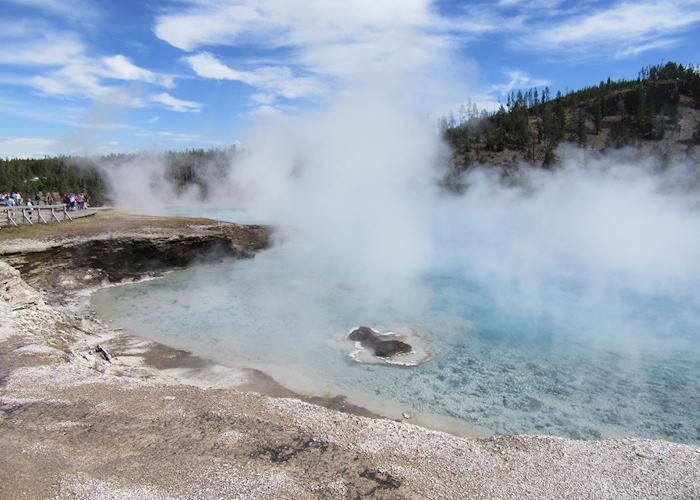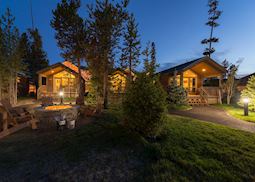Jump to:
Occupying parts of Wyoming, Idaho and Montana, Yellowstone is the USA’s oldest national park. Its far-reaching grasslands are dotted with buffalo, bison and bighorn sheep, and its forests echo with wolf howls at night. The park’s landscape is dominated by volcanic forces. You’ll see spewing geysers, mud pots, fumaroles, and hot springs tinged with yellows, oranges and greens.
You can explore the park by car, driving around its figure-of-eight Grand Loop Road, or join a 4x4 tour with a knowledgeable guide. Pause at different points to follow walking trails, view wildlife or geothermal features and read about the park’s ecosystem.
Guided tours give you a chance to get closer to the park’s more elusive animals, while hiking with a private guide takes you away from the busier areas.
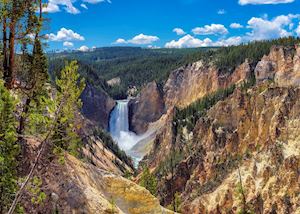 Yellowstone is roughly split into two sections: the north and the south. It’s worth exploring both, staying in towns on the outskirts such as Jackson, Cody and Gardiner. All of these towns have a Wild-West feel — shops sell cowboy gear, steak restaurants line the streets, and rodeos are held each year.
Yellowstone is roughly split into two sections: the north and the south. It’s worth exploring both, staying in towns on the outskirts such as Jackson, Cody and Gardiner. All of these towns have a Wild-West feel — shops sell cowboy gear, steak restaurants line the streets, and rodeos are held each year.
Driving around Yellowstone is easy thanks to its straightforward Grand Loop Road (though it can get busy in summer). There are lots of places you can pull over and head off from on foot. Interpretation panels put everything you’re seeing into context, from the park’s geology to its history as the world’s first national park.
We can also arrange a variety of guided activities in and around the park. Travel by snowcoach to Old Faithful and watch the steaming geysers erupt in a wintry landscape. Take a scenic float trip along the Snake River. Or, go hiking along some of Yellowstone’s 1,449 km (900 miles) of trails with a guide who can identify the flora, fauna and volcanic features that you encounter.
What to see and do in Yellowstone’s northern loop
Much of Yellowstone occupies a high plain surrounded by mountains and vast forests, which makes for excellent hiking opportunities. Following the Dunraven Pass, you can take in views across to Mount Washburn, with the bowl-shaped park stretching out below you.
You can also visit the Grand Canyon of the Yellowstone, either independently or on a privately guided hike. The canyon’s steep golden-rock cliff faces slant down 365 m (1,200 ft) to the rushing waters of the Yellowstone River below, and you’ll pass through pockets of Douglas firs to reach it.
From the canyon’s Artist Point, you can see the Lower Falls, a frothing curtain of water ending in a hazy cloud of spray. You can also stand on the brink of Upper Falls, feeling the power of water trembling through the rock beneath your feet.
 Wildlife viewing is best in the Lamar Valley, known as ‘Yellowstone’s Serengeti’. Here, you can gaze over open plains grazed by bison, moose, elk and pronghorn antelope.
Wildlife viewing is best in the Lamar Valley, known as ‘Yellowstone’s Serengeti’. Here, you can gaze over open plains grazed by bison, moose, elk and pronghorn antelope.
Joining a guided tour increases your chances of seeing these animals, along with more elusive species such as wolves and bears. You leave early in the morning, when wolves in particular are most active and easiest to spot. The experienced guides are tuned into the park’s wildlife and know the best places to spot whichever animal most interests you. They can also tell you all there is to know about each species. Once you encounter a wolf pack or a bear, they’ll set up their telescope so you can observe them in detail.
There are over 10,000 geothermal features in Yellowstone. One of the best-known, Mammoth Hot Springs, is located in the far northwest of the park. This complex of springs has formed terraced ‘hills’ of travertine. These chalky, step-like formations are dripping in stalactites, so it looks as though a cave has been brought above ground.
What to see and do in Yellowstone’s southern loop
Flatter but more turbulent with volcanic activity, the southern side of the park is where you can watch geysers spurt water high into the air. It’s also where you can tread boardwalks beside mud pots and take in the vivid orange, red and yellow rings that circle the Grand Prismatic Spring.
The smell of sulphur fills your nostrils as you hop from one volcanic feature to another in a landscape that feels alive.
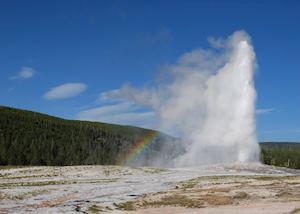 Head to Old Faithful for an almost-guaranteed sight of a geyser shooting boiling water into the sky — it erupts up to 42 m (140 ft) roughly every 78 minutes.
Head to Old Faithful for an almost-guaranteed sight of a geyser shooting boiling water into the sky — it erupts up to 42 m (140 ft) roughly every 78 minutes.
For a less predictable but arguably more impressive sighting, the Steamboat is capable of expelling water higher than any other geyser in the park — up to 91 m (298 ft).
In the southeast, you can visit Yellowstone Lake. Its waters cover part of the Yellowstone Caldera, the supervolcano whose hidden power causes the park’s landscape to belch, steam and bubble. You can take a boat trip on its still, blue waters, which belie the forces at work below.
Nearby, you can follow a walking trail through the Mud Volcano thermal area. Here, you’ll pass sizzling ‘cauldrons’, gurgling pools and steaming hillsides until you reach the desolate shores of Sour Lake, named for its acidic water.
Best time to visit Yellowstone National Park
The park gets very busy in July and August, so visiting in late May to June and September to October is best. In the spring, animals have emerged from hibernation, many with their young, wildflowers are blooming and snowmelt powers waterfalls into full flow. In September, you can witness the rutting season for elk and see the park dressed in autumnal shades.
who's been there

Start planning your tailor-made trip to Yellowstone National Park by contacting one of our USA specialists
-
01993 838 92501993 838 867
- Make an enquiry
Suggested itineraries featuring Yellowstone National Park
Our itineraries will give you suggestions for what is possible when you travel in Yellowstone National Park, and they showcase routes we know work particularly well. Treat them as inspiration, because your trip will be created uniquely by one of our specialists.
Places near Yellowstone National Park
- Grand Teton National Park 72 miles away
- Cody 72 miles away
- Billings 129 miles away
- Butte 139 miles away
- Montana 169 miles away
- Sheridan 176 miles away
- Wyoming 190 miles away
- Salt Lake City 275 miles away
Photos of Yellowstone National Park
Accommodation choices for Yellowstone National Park
We’ve selected a range of accommodation options for when you visit Yellowstone National Park. Our choices usually come recommended for their character, facilities and service or location. Our specialists always aim to suggest properties that match your preferences.
-
![Old Faithful Snow Lodge]()
Old Faithful Snow Lodge & Cabins
Yellowstone National Park -
![Explorer Cabins at West Yellowstone, Yellowstone National Park]()
Explorer Cabins at West Yellowstone
Yellowstone National Park

